
Aquila Racing Cars ApS | Finalist
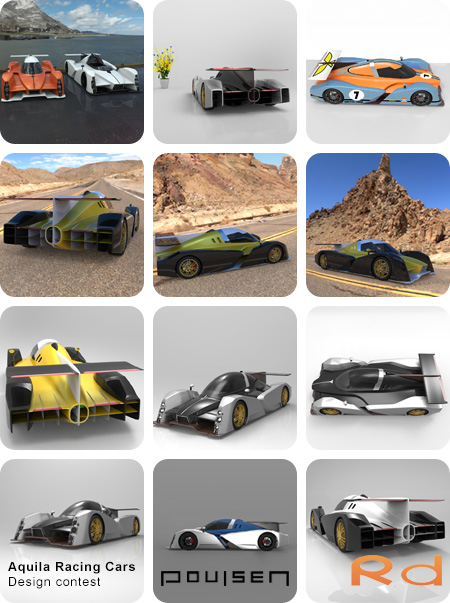
Automotive design | Aquila Racing Cars ApS | Finalist
aquilaracingcars.com • Januar 2014
In January 2014, I participated in a design competition to create a single-seater mini race car for Aquila Racing Cars. Together with Torben Nyegaard Poulsen, we had two weeks to develop a proposal, which was selected as one of the top seven to move forward.
In the next phase, we had eight weeks to refine and enhance our design. Finally, the seven finalist designs were showcased at Aquila’s exhibition stand during a racing car fair in January 2014.
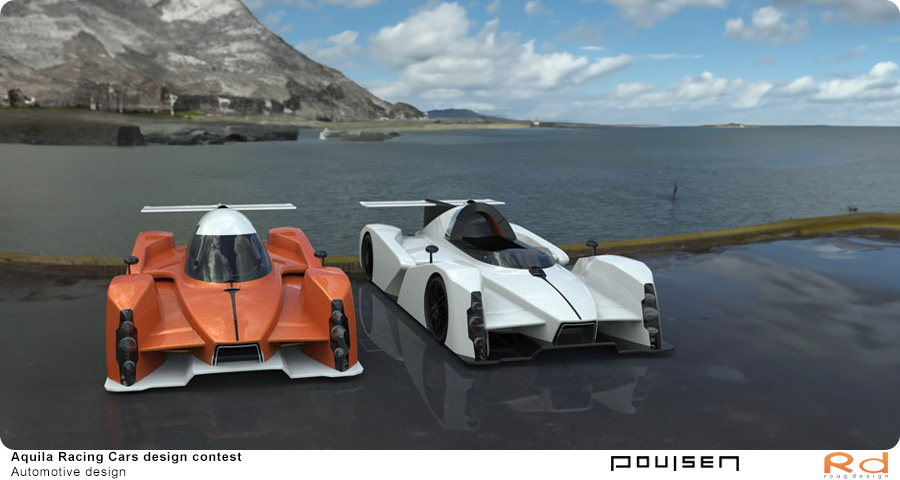
2nd phase, the final design
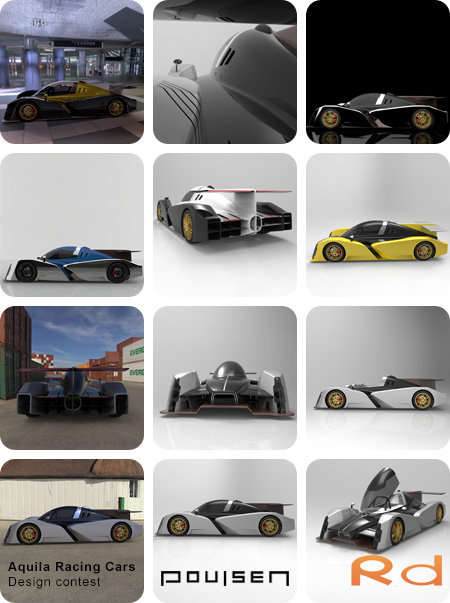
Aquila Racing Cars Project – Design Optimization
In the next phase of the project, we had more time to refine the design and dive into the details. We thoroughly examined how other race cars are built and worked closely with an engineer to gain insights into aerodynamics. Among other things, we learned that an efficient front intake requires a well-placed exhaust point at the rear.
The deadline for the second submission was January 3, 2014, but as both Torben and I planned to go on holiday starting December 17, we worked intensively to complete the project before then. We managed to finish and submit our design via email on December 17.
About the Design
In this phase, we focused particularly on the fenders, which proved to be one of the most complex parts of the design. Although they appear simple, the challenge lay precisely in their simplicity. The concept was for the fenders, when viewed from above, to resemble two water droplets facing opposite directions.
The biggest challenge was the center cut between the fenders, visible from the side of the car. In both projects, the fenders required significant time to perfect.
The body of the car followed the same general concept as the first design, but with several improvements. We connected the body and wings into a cohesive form, whereas they were previously separate components. The new chassis also made it easier to understand and design air intakes and outlets, resulting in a more integrated design.
Styling the Car
With the basic shape in place, we began styling the car and refining details, such as the windshield. We drew inspiration from Aquila's design language and sought to incorporate some of their signature elements. Torben and I were committed to continually improving the design, which meant frequent adjustments and, in some cases, restarting certain details.
Some elements from the original design were retained, such as the front grille, where we added an extra chrome detail. The only part we reused directly from the previous 3D model was the side mirrors, which were positioned further out due to the changed shape of the fenders.
The width and length of the car remained the same as in the original design.
Move the mouse over the image and press the left button to interact.
More information on animation VR
Final Design Images
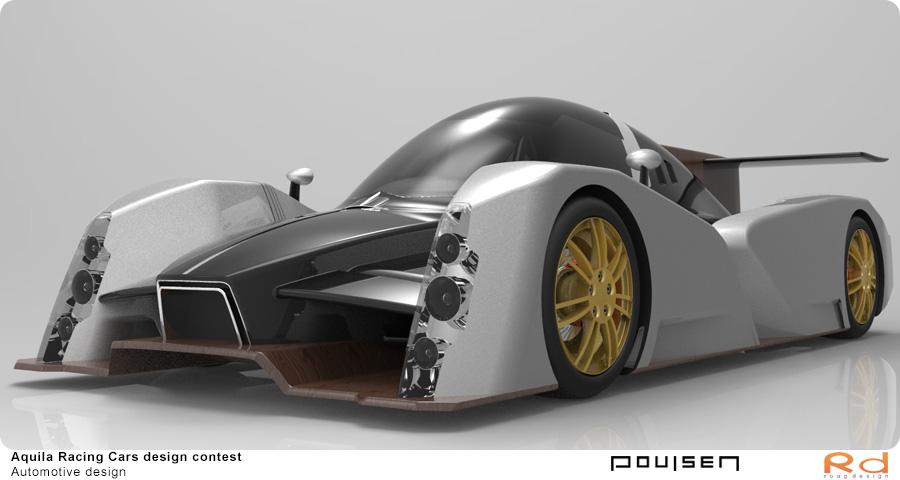
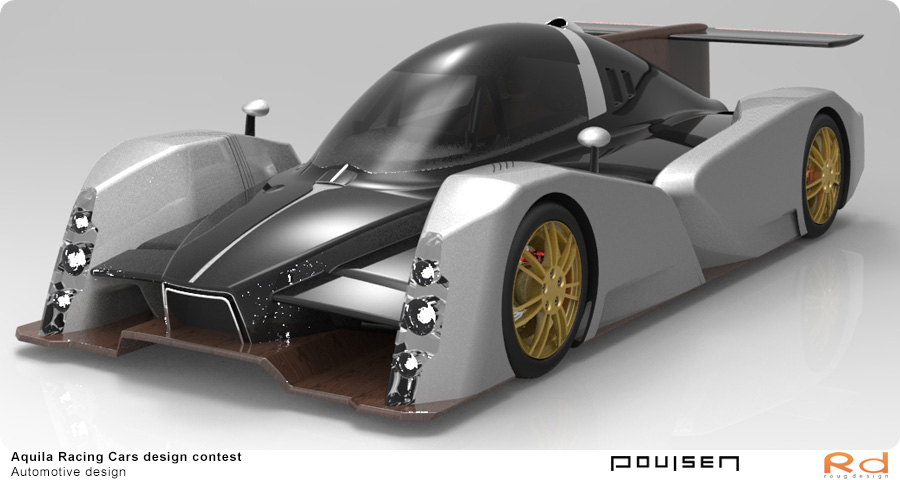
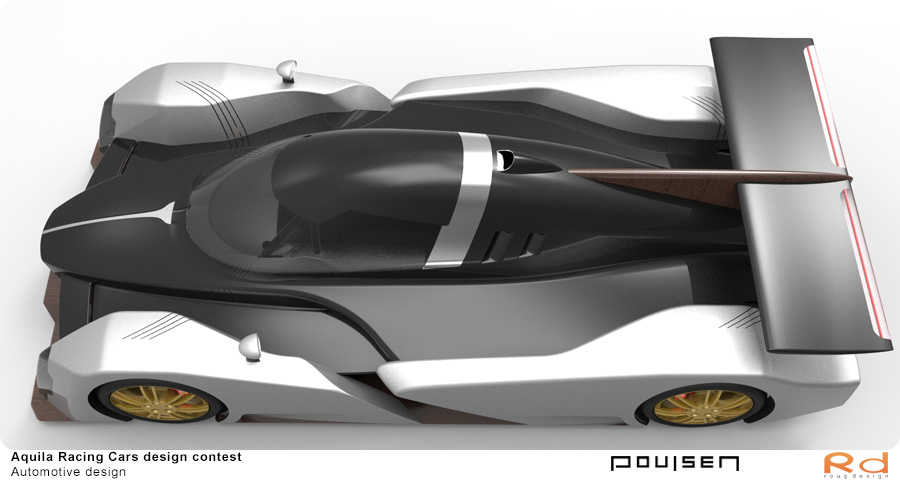
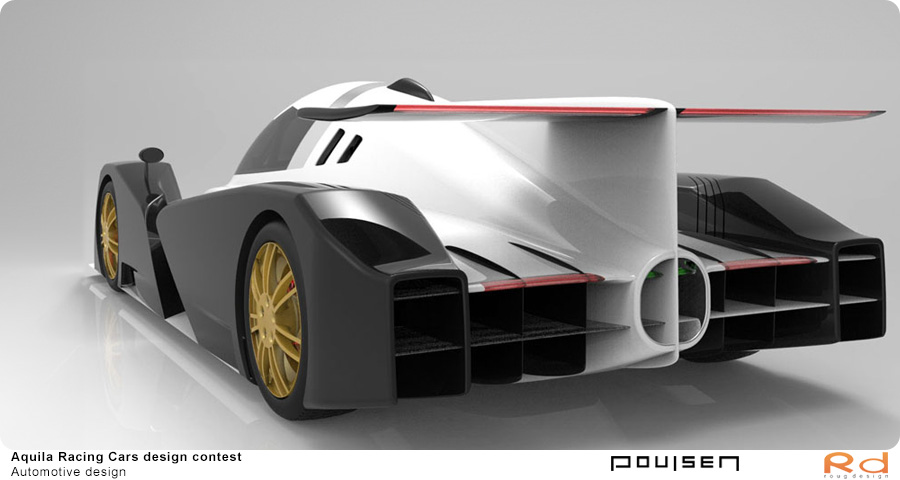
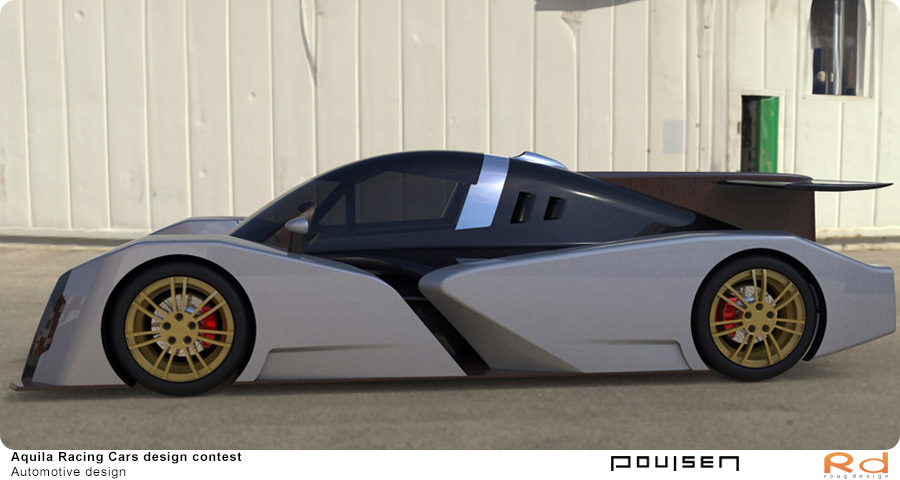
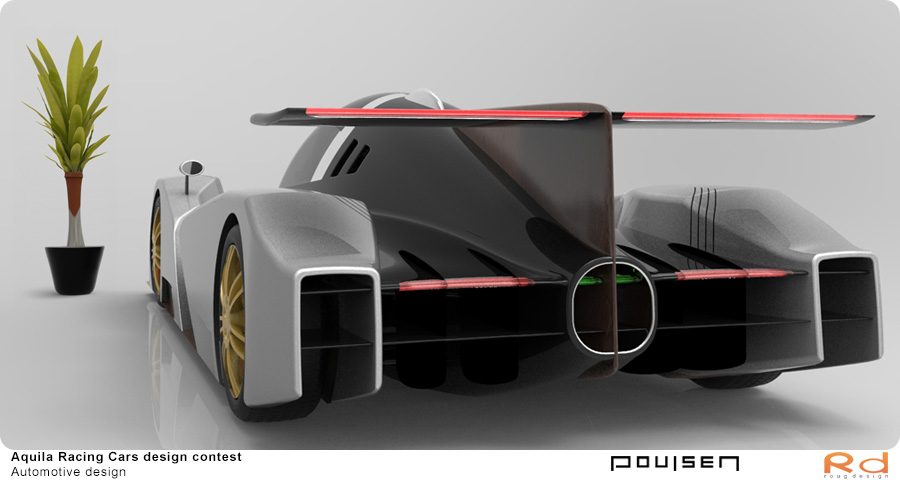
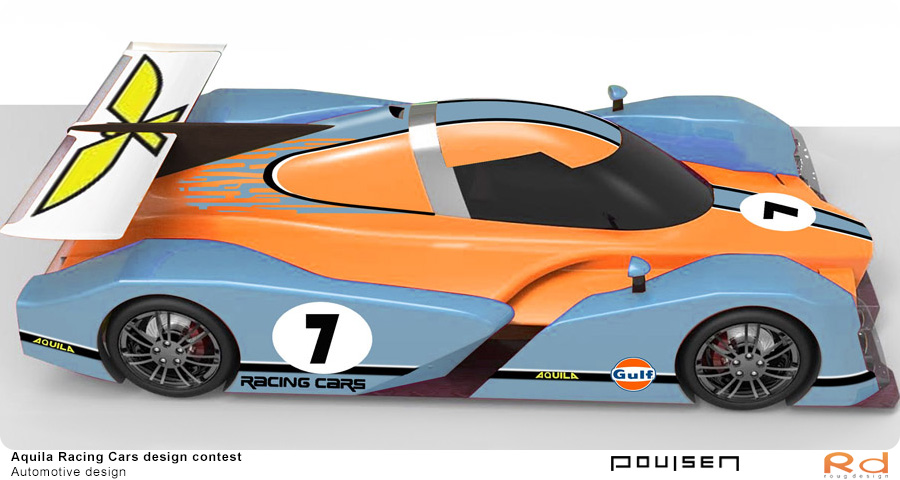

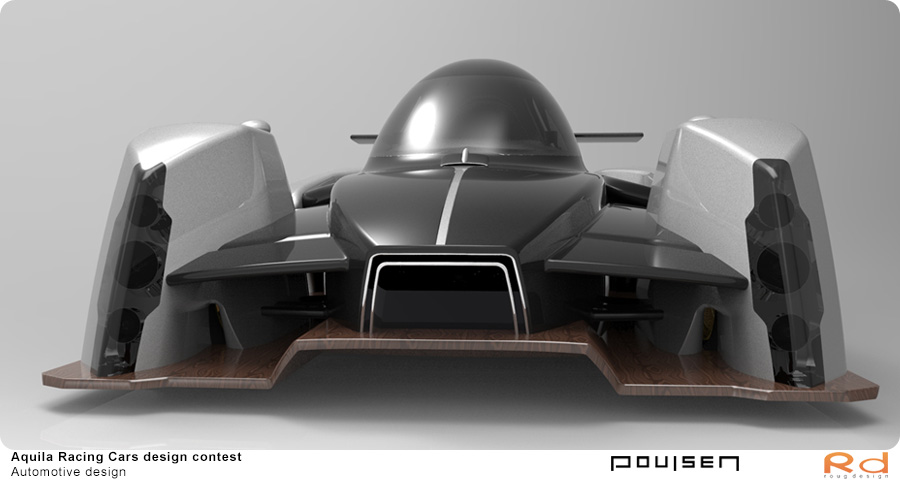
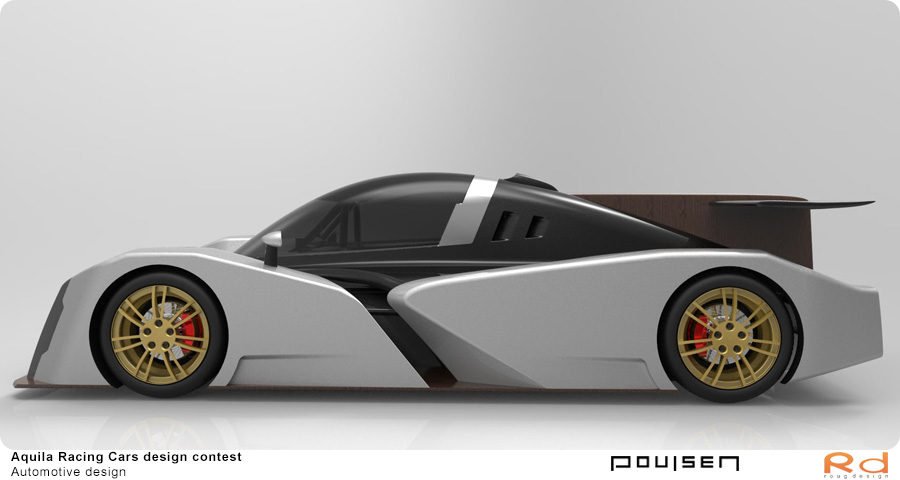
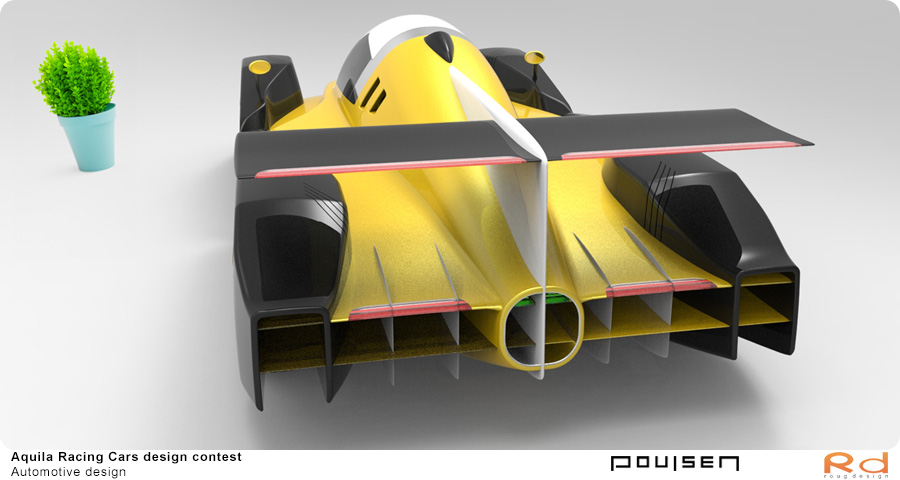

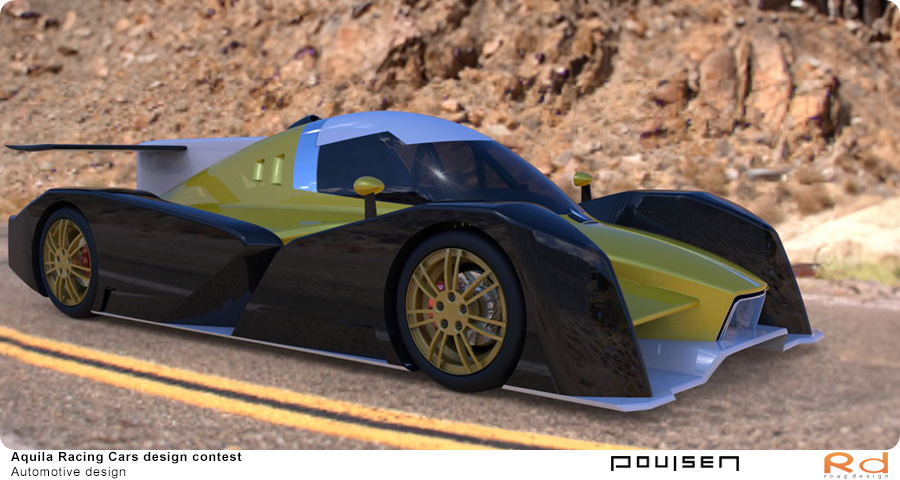
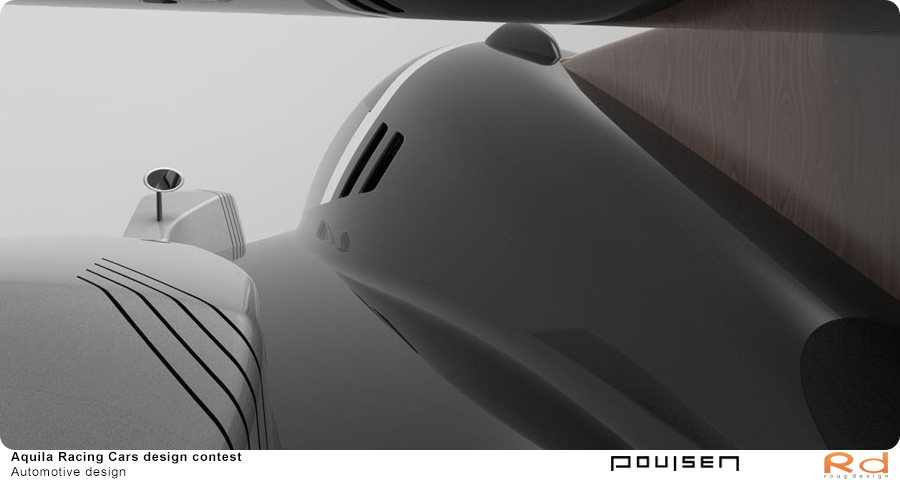

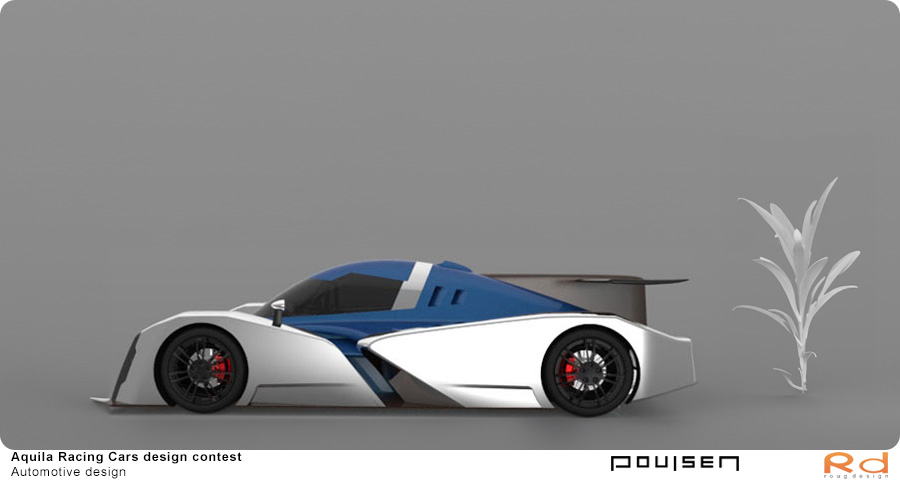
1st phase, a concept
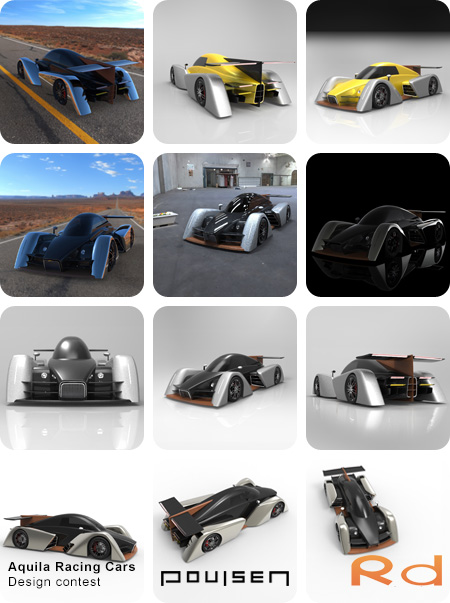
Description of the First Submission
I decided to enter the competition about two weeks before the deadline, as I was curious to see the chassis, but I didn’t have much time. Therefore, I teamed up with Torben Nyegaard Poulsen, who quickly sketched a design. From this sketch, I began building the 3D model.
Meanwhile, Torben added some details to the top view drawings, which I assumed were meant to be serious. This led me to work hard on adjusting the details on the fenders. It turned out that Torben hadn’t given much thought to those specific details, but they ultimately made the fenders look more dynamic and visually appealing.
A few days after submitting the project, I received an email informing me that Aquila had postponed the evaluation of the projects. It took some time before I received confirmation that we had progressed to the next round. In the email, I also received a detailed review from three judges, outlining which aspects of the concept needed improvement. Some of the feedback was written in highly technical English.
At the end of the email, I was asked if I wanted my name mentioned on their Facebook page, which I gladly accepted.
It turned out that there were 27 participants, and seven of us advanced to the finals.
Move the mouse over the image and press the left button to interact. More information on animation VR